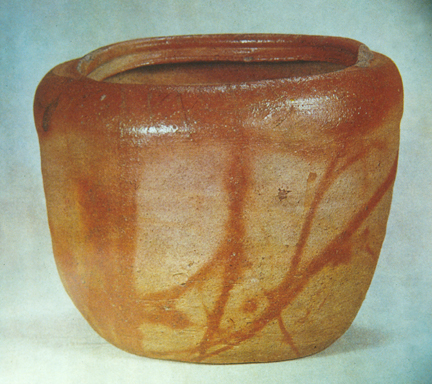The earliest ware from Bizen is similar in many respects to Tamba and Shigaraki in the use of coarse stoneware clays and natural bidoro (ash) glazes. Later, during the Momoyama, other firing techniques evolved at Bizen, such as hidasuki (fire-streaking), seen on this tea ceremony water pot. Again showing the Japanese preference for surface design derived from firing process rather than applied decoration, hidasuki is dependent on a specific method of firing. Pieces are wrapped in straw soaked in brine (salt water) and placed into saggars prior to firing. During the firing process, the straw burns away, leaving a 'flash' of sodium vapor on the surface of the pot, which causes a slight glaze formation. These glaze flashes turn the light colored stoneware to a reddish orange color, and show the areas where the straw was in contact with the body. The next image shows the method of placing pots within a saggar for hidasuki firing.
CLICK HERE TO GO TO PHOTO OF HIDASUKI WARE BEING PLACED IN A SAGGAR

BIZEN WATER POT, with hidasuki (fire-streaking) pattern, stoneware
Japan, 1568-1615 CE


